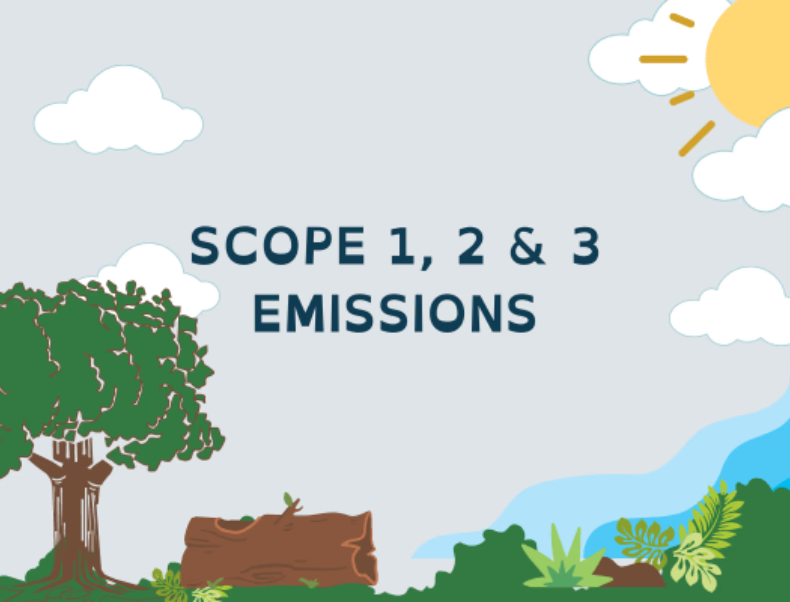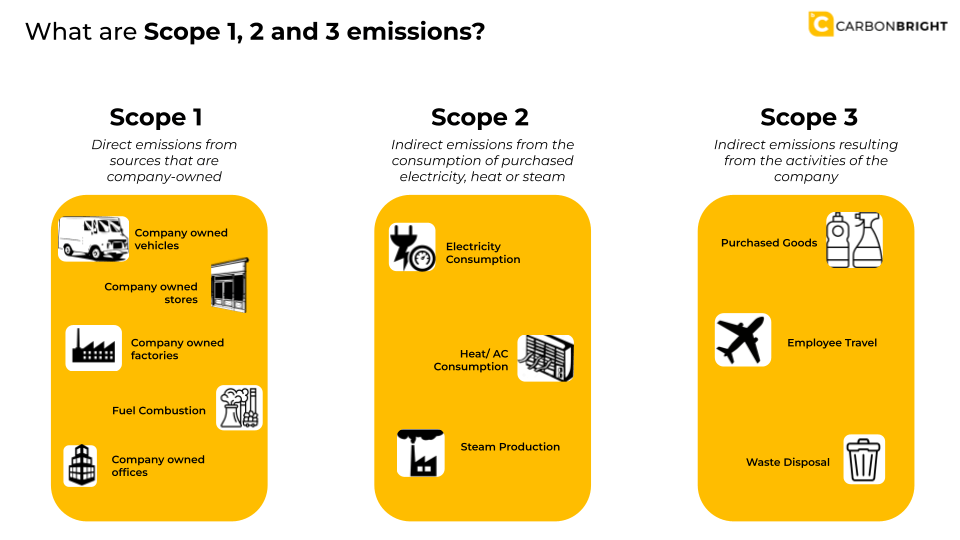Scope 1, 2 and 3 Emissions Overview

Have you ever wondered why companies use terms like “Scope 1, 2, and 3” when talking about emissions? It might sound like a bit of code, but it’s not a secret language. It’s a way for companies to understand and measure their impact on the environment. Let’s delve a bit deeper into these scopes and understand why there are three of them.

What Are Scope 1, 2, and 3 Carbon Emissions?
Think of a company as a complex puzzle, and each piece of this puzzle contributes to its carbon footprint – those things that affect the environment. The three types of emissions, known as Scope 1, 2, and 3, help break down where these emissions originate.
Scope 1 Emissions:
These are emissions that a company directly owns or controls. Picture it like the smoke coming out of a factory’s own chimney. If a company has a fleet of vehicles running on fuel (not electric ones), the emissions from burning that fuel fall into the Scope 1 category.
Scope 2 Emissions:
These are a bit trickier. They occur indirectly due to the energy a company purchases and uses. Imagine the energy used in a company’s buildings – the pollutants from generating that energy fit into the Scope 2 category.
Scope 3 Emissions:
Now, scope 3 is where it gets interesting. It includes emissions that a company is not directly responsible for but is connected to through its “value chain” – that involves suppliers and customers. Think of it like this: if a company buys materials from suppliers who get them from different sources, the environmental releases generated throughout the entire process, from getting the materials to delivering the final product, are considered Scope 3 emissions.
How Challenging Is It to Reduce These Emissions?
Reducing your carbon output is like solving a puzzle, but not all puzzle pieces are created equal. Some, like Scope 1 and 2, are a bit more manageable. A company can choose from many options for its vehicles or decide how it powers its buildings.
However, Scope 3, which often make up the majority, are a bit more challenging. Companies can collaborate with their suppliers and customers to find solutions, but it’s not entirely within their control.
While a company can decide to have a fleet of low or zero-emission vehicles, it can’t dictate how consumers dispose of plastic bottles or select settings on their laundry machines. These parts of the puzzle involve more people and more choices.
Understanding and reducing these emissions is akin to piecing together a big, eco-friendly puzzle. It requires effort, collaboration, and a touch of creativity. By comprehending where they come from, companies can make informed choices to protect our planet. It’s like being an environmental detective, and every small action makes a difference!
CarbonBright can help you understand your Scope 3 emissions, get in touch for a demo today!



